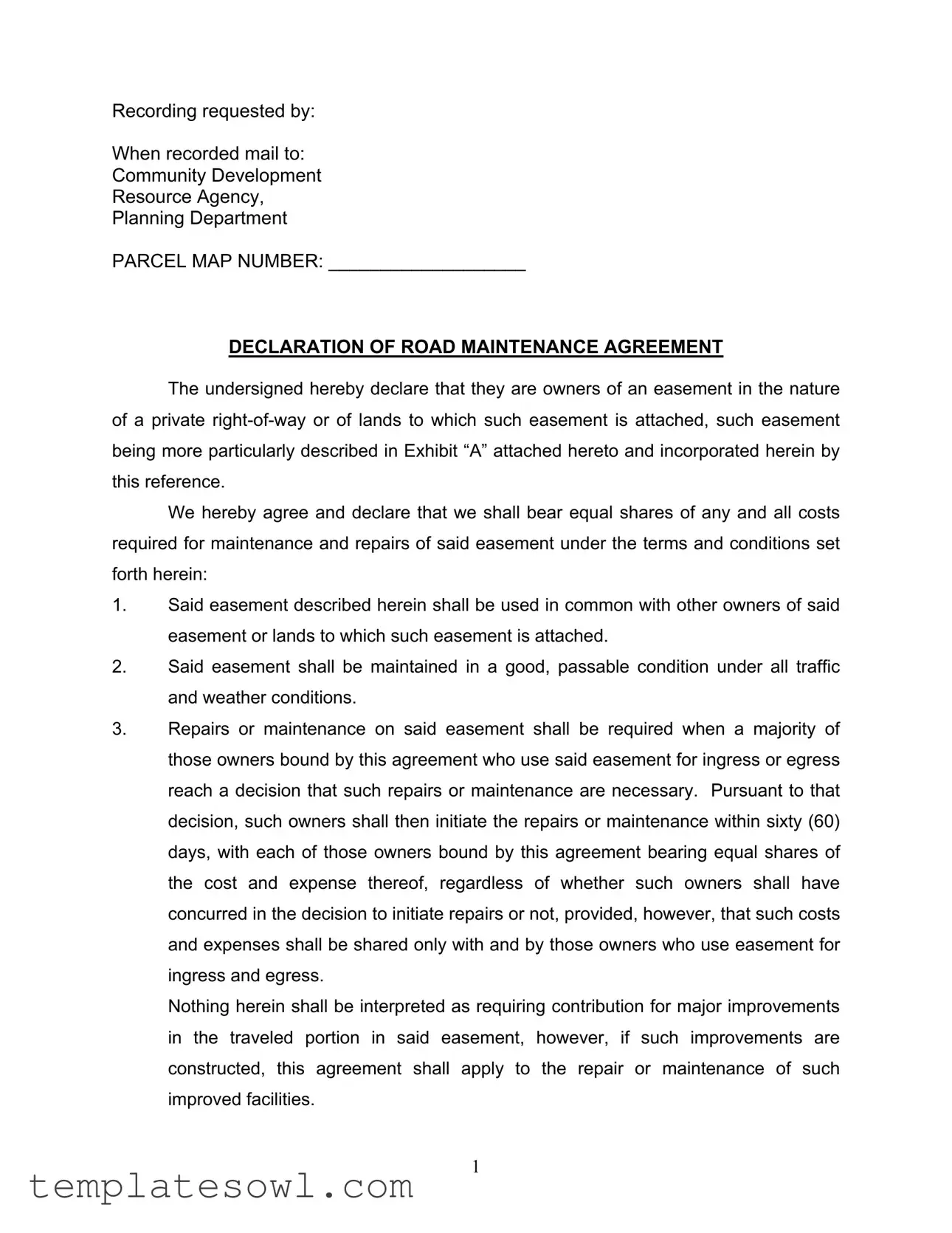Filling out a Road Maintenance Agreement form can be a straightforward process, yet many people make common mistakes that can complicate future enforcement or understanding of the agreement. One frequent error is failing to accurately fill in the Parcel Map Number. This detail is essential, as it identifies the specific easement involved, ensuring clarity among all parties. Incorrect or missing parcel information can lead to disputes about which property is subject to the agreement.
An additional mistake often seen is neglecting to attach the required Exhibit "A." This document provides a detailed description of the easement, and without it, the terms of the agreement may be ambiguous. All parties should be diligent in confirming that this exhibit is complete and attached to the agreement before submission.
Another common oversight occurs when owners don’t specify the owners who are bound by the agreement. Limiting the scope of the agreement can cause future disagreements, particularly when new owners or lessees are involved. Clear identification of all current owners ensures everyone is on the same page regarding shared responsibilities for maintenance and repairs.
Signatures represent binding agreements, yet it is not unusual for individuals to forget this crucial step. Each owner must sign the document, and their signatures should be notarized. The lack of proper notarization can render the agreement legally ineffective. Furthermore, failing to include the date and place of execution can complicate enforcement, as it is crucial for establishing the timeline of the agreement.
Some individuals misinterpret the emphasis on equal sharing of maintenance costs. While the agreement indicates that all contributing owners are liable for the costs of repairs, it can lead to confusion if owners mistakenly believe that they can opt-out of sharing expenses. Clear understanding and acceptance of this stipulation are necessary to avoid future legal disputes.
Relatedly, misunderstanding the requirements for initiating repairs constitutes another frequent error. The agreement stipulates that repairs require a majority consent among owners. If one owner believes they can unilaterally decide to initiate repairs without majority agreement, they may face disputes down the line, as other owners might not agree with the necessity or scope of the proposed work.
Furthermore, failing to acknowledge and include all provisions regarding damages can lead to challenges. For example, if an owner causes unusual wear or damage to the easement but does not realize they are responsible for covering those costs, subsequent disagreements may arise, leading to potential litigation.
Some people also overlook ongoing updates to the law that might impact their Road Maintenance Agreements. For instance, changes to Civil Code Section 845 could introduce new requirements or remedies that weren’t initially accounted for in the agreement. Regular reviews of legal obligations are important to ensure compliance.
Finally, many fail to consider how the Road Maintenance Agreement runs with the land. When they sell or transfer property, it’s crucial that the next owner is aware of and bound by the agreement's terms. Miscommunication about these responsibilities can lead to discontent among new owners who are unaware of their obligations under the existing agreement.
